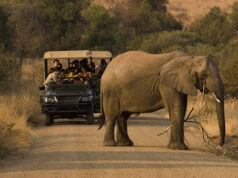Kenya, a country in Africa is known for the beautiful pink-colored flamingo bird. This article will look into the interesting facts about flamingos in Kenya. The flamingo has quite some unique details about it that have tourists from across the globe wanting to catch a glimpse of these birds. To begin with, the eggs are laid in Tanzania’s Lake Natron but hatch and mature in Kenya.
Flamingos Taxonomy
Flamingos belong to the Kingdom Chordata and the phylum Aves. There are 6 species of the flamingo bird, of which Kenya has 2 species; the greater and lesser flamingos. The greater flamingo species is larger than the lesser flamingo with a light pink beak contrasted to the lesser flamingo which has a deep red beak with black tips. READ FULL STORY
Diet
These pink birds feed on crustaceans and small fish which give it its pink color due to betacarotene present in crustaceans. The flamingos are also able to filter feed in water for several hours a day.
Fun fact: the flamingos can feed upside down while dancing and also hold their breath while feeding.
Colony
Flamingos are known to live in flocks between 10 and over 10,000 individuals.
Read: Best Travel Agencies in Kenya, Travel Deals and Packages
Breeding
The birds begin mating from the age of 3 years although most of them begin at 5 years. The high-status flamingo influences the flock to breed by changing its feathers to a deeper shade of pink.
The flock mate around the same time for the chicks to hatch the same time. The baby birds are born in grey color and are fed milk for the formative three months by both parents as well as other flock members.
Lifespan
Free flamingos live between 20 and 40 years while those in captivity may live up to 60 years
Did you also know that Flamingos:
- fly at night to avoid predators
- lay a single egg every three years
- are known to stand on one leg to retain their body warmth
- backward bending knee is actually its ankle








